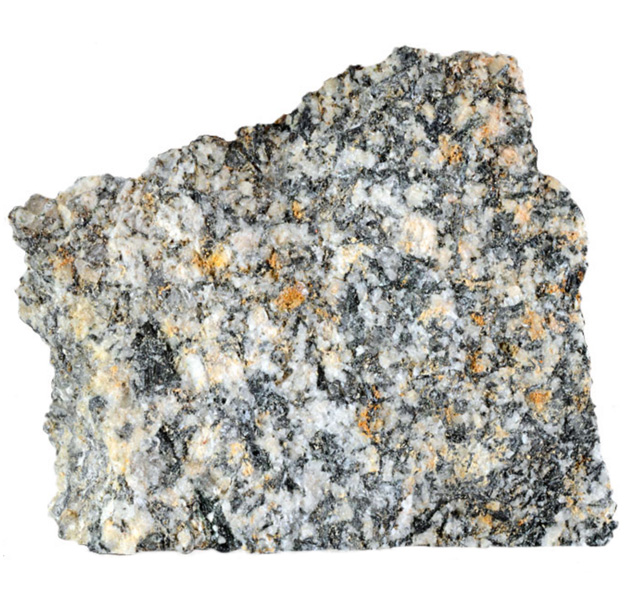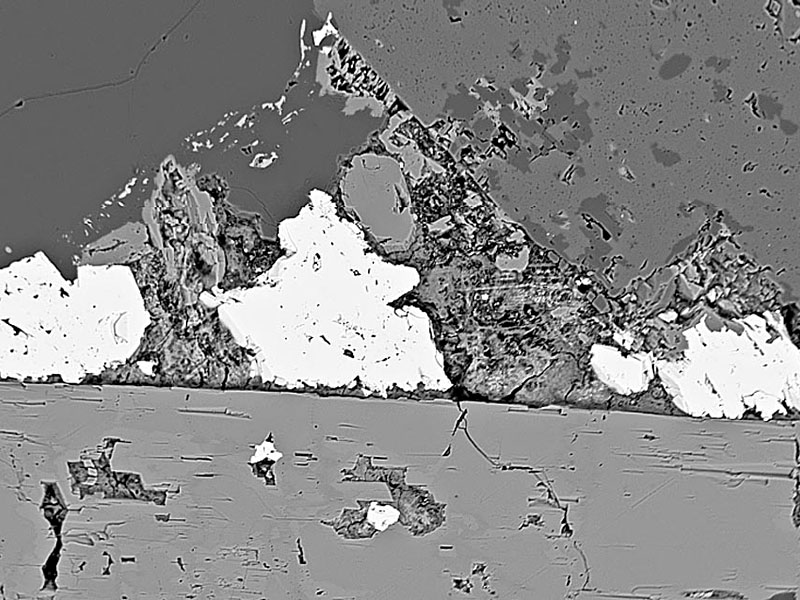
Fact sheet
This sample of granite is from the island of Rockall, which lies almost 600 km west of the Scottish mainland and is thus the most westerly rock in the UKVM collection. It is included in the UKVM collection because Rockall is recognised as part of the UK by the United Nations, although ownership is disputed and the island is also claimed by Iceland, Denmark (via the Faroe Islands) and Ireland. The island's importance lies in its remote location, and claims concerning fishing rights and ownership of the oil-rich continental shelf. The granite island is the tip of a much larger volcanic edifice that erupted during the Paleogene and is part of the large North Atlantic volcanic province that stretches from Greenland to southern England.
The thin section shows this to be a coarse-grained granite rich in aegirine, a sodium-rich pyroxene with unusual patchy green colouring and pleochroism ranging from green to straw-yellow. The feldspar shows evidence of extensive exsolution to orthoclase and plagioclase, and is mottled when viewed in plane polarised light. The quartz grains appear clear and undeformed. The rock is known to contain several unusual secondary minerals including bazirite, elpidite, leucophosphite and apatite, although they are not prominent in this thin section.
The United Kingdom Virtual Microscope (UKVM) collection consists of igneous, sedimentary and metamorphic rocks from around the UK.
It is intended as a teaching resource, helping to tell the story of the common rock types and how they form, and reflecting the history of the UK at the margins of the continent of Europe. The collection is a series of teaching sets, for example igneous rocks from the North Atlantic Igneous Province and SW England; high-temperature metamorphic rocks from Scotland and low-temperature metamorphic rocks from Wales; and sedimentary rocks, including English limestones and sandstones.







